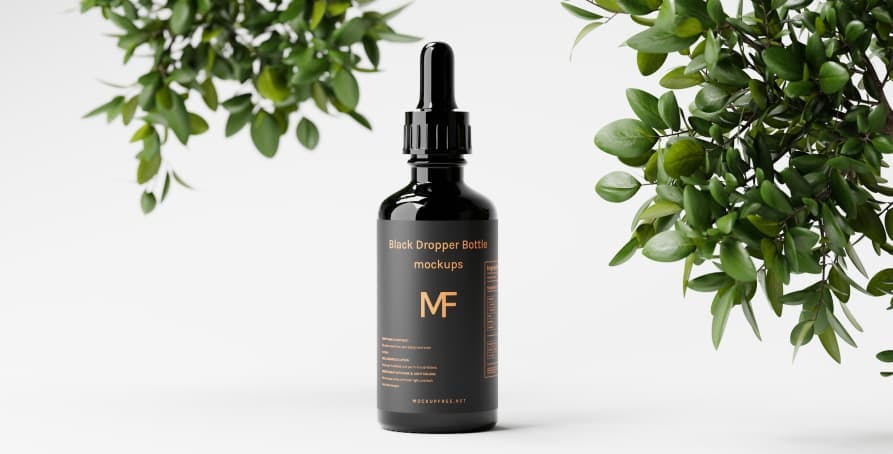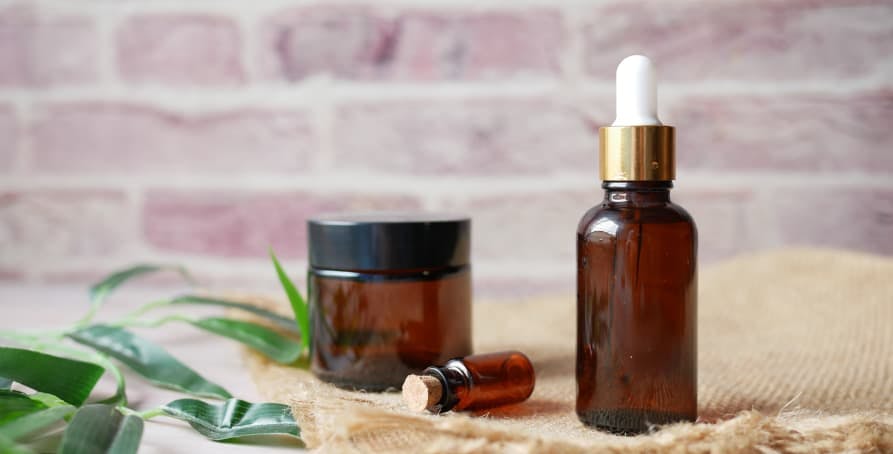ESG / CSR
Industries
The Business of Green Cosmetics



The marketing team within your company has a lot more responsibilities these days than just trying to boost sales, but to ensure that products are marketed and catered to the current audiences – such as when trying to sell green cosmetics.
Attaching the word, “green” to anything in marketing is supposed to give it an automatic, environmentally friendly connotation – but is this the case with green cosmetics?
In this article, we’ll explain what green cosmetics are, its purpose, examples, the pros and cons of green cosmetics, and how your cosmetic business can get started on going green.
What are green cosmetics?
As per the name, green cosmetics refer to cosmetic products that are manufactured with sustainable and eco-friendly practices in mind. This can include seeking to ethically source materials to be used for the product itself, seeking to use recyclable or sustainable materials for packaging the green cosmetics, and avoiding the use of chemicals which could prove harmful to the planet to produce the product.
Green cosmetics have inevitably grown in popularity in the past few years as awareness regarding climate change continues to rise. As a result, organic cosmetics were valued at around $19.6 billion in the U.S. alone in 2022 – with this number only expected to grow as people seek to become more sustainable.
👉 People who want to make small, greener changes to their lives without breaking the bank may find green cosmetics exceptionally appealing – as it allows them to alter one of their everyday habits to be more environmentally friendly at a lower price rather than buying an electric car or replacing their dishwasher to be more energy efficient.

What is the main goal for a business selling green cosmetics?
The main goal for businesses looking to sell green cosmetics is likely to vary depending on the company.
However, regardless of the primary motive for companies looking to sell green cosmetics – the goals will often prove beneficial for both the business and the consumers.
Here are a few examples of the goals a business selling green cosmetics might aim to achieve:
- Take Greater Responsibility for Sustainability: As industries across the board become more cognizant of the benefits of curating a sustainable business, alongside the new environmental regulations that companies must adhere to – it’s not surprising that a cosmetic company would want to get a head start on developing more eco-friendly products.
- Prevent Legal Issues: When traditional cosmetics are manufactured, they often involve the use of synthetic chemicals that need to be tested. As a result, sometimes these products skip human testing before hitting the shelves. Therefore, seeking to sell green cosmetics could prevent the need for this testing altogether – and avoid angry customers looking to sue after buying a product that caused an allergic reaction.
- Transparency & Accountability: One surefire way to be honest with your customers is to make sure that your ingredient label has recognizable ingredients. Ultimately, seeking to sell green cosmetics can motivate businesses to enhance transparency and accountability.
- Be More Eco-Friendly: It’s no secret that the world is battling global warming at an unprecedented rate, and it’s viable to believe that some companies truly want to be a part of the solution. Aiming to develop green cosmetics as opposed to traditional products can allow companies to reduce their own carbon footprint and achieve their individual emission reduction goals.
- Business Growth: While this last goal may seem self-centered, it is imperative to remember that a business can’t grow without growth – and seeking to sell a more sustainable product, such as green cosmetics, could help provide a company with the financial revenue it has been looking to gain. This is especially important seeing as customers and investors alike are growing increasingly interested in allocating their time and money towards more sustainable brands – with up to 81% of people preferring to purchase products from sustainable companies.
👉 Ultimately, a business looking to sell green cosmetics is likely to achieve greater environmental responsibility, transparency, customer loyalty, and business growth as a result of seeking more eco-friendly practices.

What are the benefits of green cosmetics?
Green cosmetics are appealing for a multitude of reasons – but here are some of the top selling points that could convince a customer to buy green cosmetics as opposed to traditional make-up products.
Be More Eco-Friendly
One of the biggest advantages of using green cosmetics is knowing that you aren’t contributing to excess emissions, plastic waste, or animal testing.
👉 This is one of the main reasons why people will opt to buy green cosmetics, and what will incentivize companies to make them – as happy customers equates to a successful business.
Buying green cosmetics to be more eco-friendly means:
- Opting for recyclable or sustainable packaging;
- Seeking products that don’t make use of harmful chemicals, such as sunscreens that could harm the ozone layer;
- Choosing products that contain natural and biodegradable ingredients over processed chemicals.
Clearer Understanding
Have you ever stood in the hair care aisle of your local drugstore, and started googling what cetaphil alcohol is because you didn’t know it off the top of your head?
Oftentimes, cosmetic products implement the use of unknown chemicals – which aren’t always the best for your hair or skin. This is one of the benefits of purchasing green cosmetic products, as it will be much easier for you to decipher what is actually inside the product you are buying.
Ethical Sourcing
Green cosmetics don’t only keep clean ingredients in mind, but fair working practices and overall safety when manufacturing the product.
Ethical sourcing is paramount for any business working to develop green cosmetics.
👉 For instance, companies in the green cosmetic industry may go as far to partner with local farmers or sustainable packaging companies to further demonstrate their commitment to making their products more eco-friendly.
A Win for Sensitive Skin
Sensitive skin isn’t likely to be a fan of synthetic chemicals, but it will be more tolerant of natural ingredients – which green cosmetics aim to use.
No Animal Abuse
For some, the thought of using a mascara that was tested on a wild bunny isn’t comforting – but green cosmetics can often serve as a solution to this intrusive thought.
This is because green cosmetics will often strive to create cruelty-free products, as natural products will often not require the same level of testing as cosmetics made with synthetic ingredients.
👉 Some examples of companies that sell green cosmetics include Aveda, Burt’s Bees, and The Body Shop.

What are the downsides of green cosmetics for a business?
Despite all of the benefits associated with green cosmetics, many companies may be hesitant to venture down the path of sustainable beauty.
First off, green cosmetics cost more – for both the business and the customer. This is because labor costs are generally higher for eco-friendly ingredients often found in green cosmetics: such as nut oils, cucumber extract, and shea butter. As a result, the price tag for a body lotion with shea butter is bound to be higher than its cheaper counterpart.
👉 The next time you’re flabbergasted at the high price of an eco-friendly shampoo and conditioner set, don’t be alarmed or automatically think the company is greedy – remember that it costs money to be eco-friendly.
In addition to this, the problem for some companies trying to go green is that it could backfire – and ultimately result in higher chances of greenwashing. This is due to the fact that if a business selling green cosmetics fails to back up their claims with adequate sources, even one time – it could result in massive backlash.
💡 An easy tip to see if a product is truly deemed sustainable is to read the list of ingredients – if you can recognize everything without the need to do a quick engine search, odds are the product can be classified as a green cosmetic.

How can companies aim to honestly sell green cosmetics?
It can be overwhelming for businesses to transition to the production and distribution of green cosmetics.
Here are a few tips to help your company get started and maintain a successful and sustainable transition:
- Prevent Greenwashing – One of the best ways to make sure that your claims are always backed up by factual evidence is to stay up-to-date with all current and future environmental regulations – something Greenly can help you with.
- Honest Marketing – Don’t try to oversell how sustainable your products are. Investors and customers alike would prefer honesty over false information, even if the current statistics may not be up-to-speed with other green cosmetic companies.
- Start Small – If any company suddenly slaps on an “eco-friendly” label overnight, it’s going to come off as suspicious – but small actions over time will be seen as genuine. If your company is struggling to completely change the way your cosmetics are manufactured and sold, start small – such as with the materials your product is packaged in.
- Collaborate – If your green cosmetics business is linking with a well-known sustainable partner, it can help to gain trust and confidence in future customers and investors.
- Get Creative – Allowing room for innovation can help spur new ideas for future green cosmetics or other sustainable products, which could further decarbonize your business and allow for increased financial income.
Overall, green cosmetics can indeed be seen as nothing more than a business opportunity – but there’s no need to fret. Companies that get into the business of green cosmetics for nothing more besides profit won’t find it sustainable (pun intended) and the backlash of greenwashing will eventually catch up to them. However, a business that is truly dedicated to the slow and steady race of providing green cosmetics is bound to reap the rewards in the long run.
What about Greenly?
If reading this article about the business of green cosmetics has made you interested in reducing your carbon emissions to further fight against climate change – Greenly can help you!
It can be difficult to understand the business of green cosmetics and how to adjust your company accordingly to succeed in its climate goals, but don’t worry – Greenly is here to help! Click here to book a demo and get personalized expertise on how you can start to reduce your own emissions and decrease your environmental impact.
Greenly can help you make an environmental change for the better, starting with a carbon footprint assessment to know how much carbon emissions your company produces.




